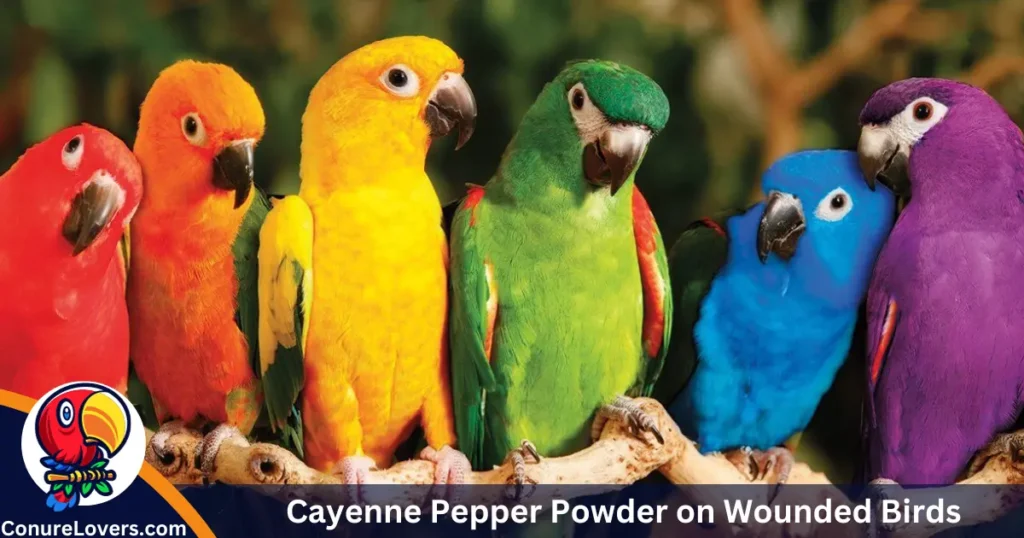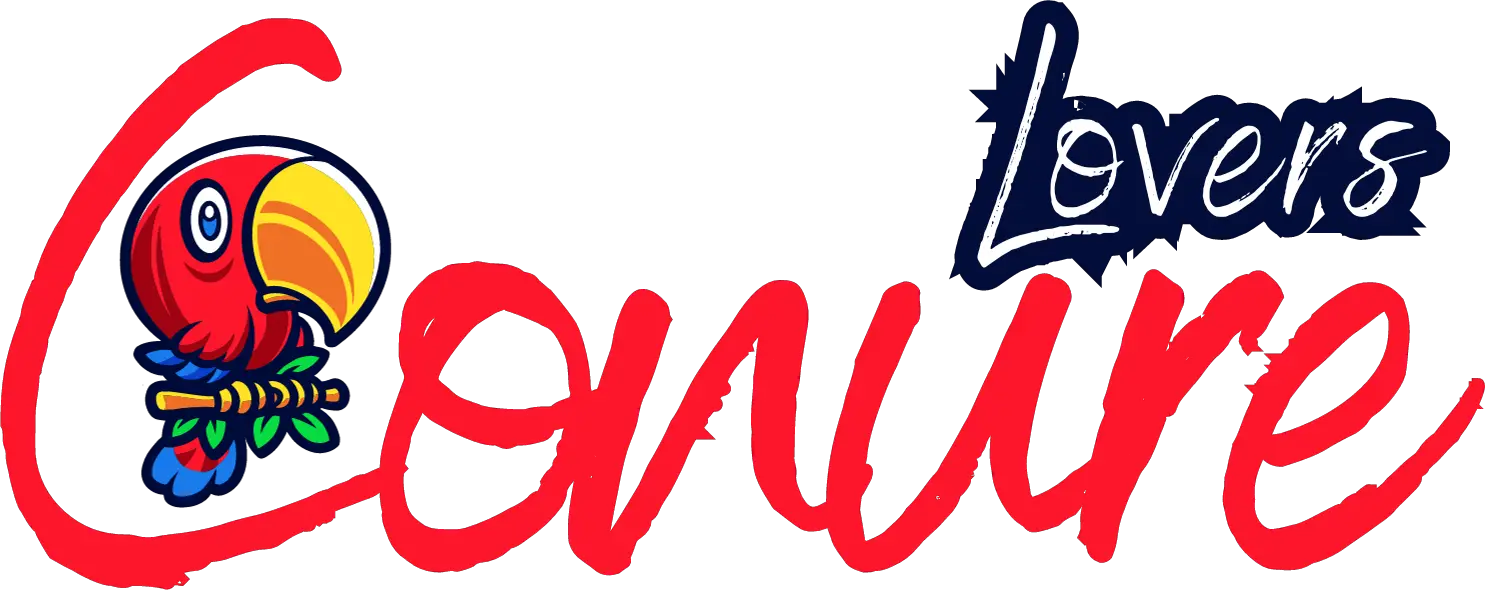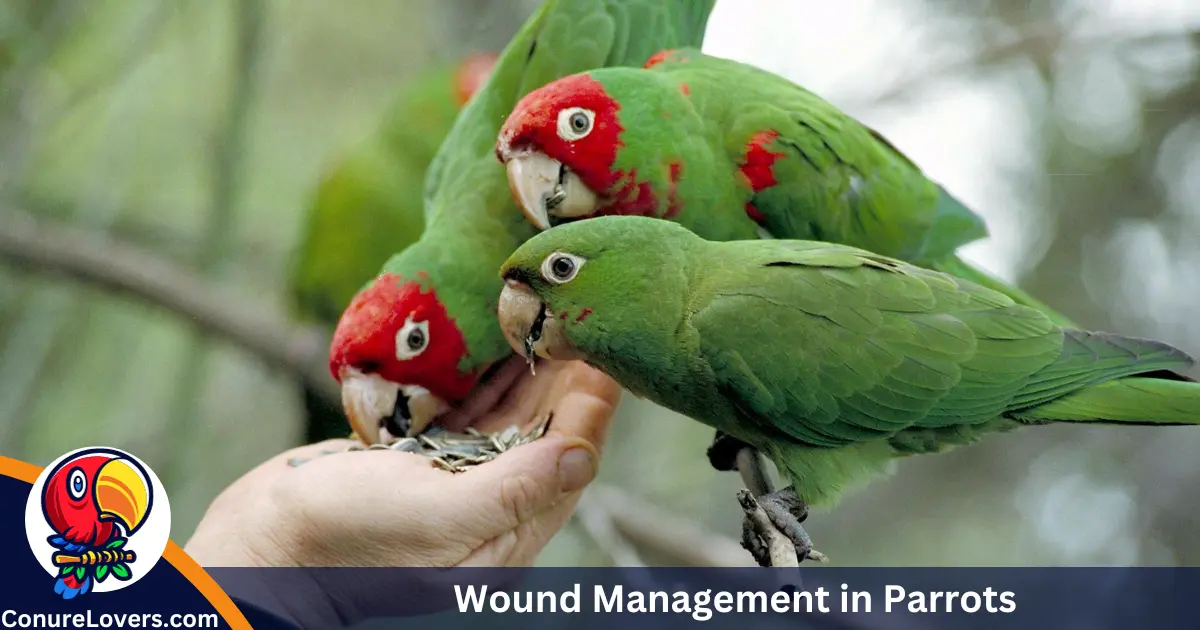“Cayenne pepper powder can be a good and safe way to help birds with wounds. It has things that stop bleeding, reduce swelling, and fight germs. Putting cayenne pepper powder in your bird first aid kit is a smart idea, so you’re ready for any problems!
Feathered buddies can get hurt in different ways, like feather picking, tussles with cage pals, or accidental mishaps. As a bird parent, it’s crucial to handle these injuries pronto and with skill.
That’s where cayenne pepper powder steps in – a natural and safe fix for bird boo-boos that ought to be a must-have in every birdie first aid kit.
Cayenne Pepper versus Styptic Powder
Gentle Alternative to Styptic Powder
Traditional wound solutions like styptic powder might work, but they can be tough on our feathered friends. Styptic powder often has aluminum sulfate or potassium aluminum sulfate, which, if not applied carefully or in excess, may lead to skin irritation and burns [1].
Why Cayenne Pepper Works for Wounds
Cayenne pepper powder, crafted from ground cayenne peppers, isn’t just for spicing up meals. It’s been a go-to natural remedy for ages, and guess what? Birds can benefit too! Here’s why cayenne pepper powder is a fantastic option for managing wounds in our avian pals:
- Hemostatic Properties: Thanks to capsaicin, a natural compound, cayenne pepper helps put the brakes on bleeding by swiftly constricting blood vessels.
- Anti-inflammatory Magic: Cayenne pepper does more than add spice – it also kicks inflammation and pain to the curb, making it easier for birds to heal.
- Antimicrobial Defense: Packed with compounds that take on harmful bacteria and fungi, cayenne pepper acts as a superhero against infections that may sneak into wounds.
Read Also: An Overview of Stargazing (Head Twirling) in Parrots
How to Administer Cayenne Pepper Powder on Wounded Birds

Using cayenne pepper powder for bird boo-boos is easy. Just dab a bit of the powder right onto the wound or mix it with water to create a paste, then apply.
Here’s the drill: Keep your feathered friend still, avoiding wing flapping to prevent the powder from flying and ending up in the eyes.
Now, a heads-up – cayenne pepper may cause a bit of a tingle, so use it carefully and stick to small wounds. If the injury is serious or deep, it’s smart to chat with a vet.
Fun fact: Birds don’t mind the spicy kick of cayenne pepper because they’re missing the taste receptor for capsaicin, the spice-maker that gives us humans that zingy sensation [5]! So, even if your bird accidentally nibbles the powder, no worries about discomfort or irritation.
FAQs
- Is cayenne pepper safe for parrots?
Yes, cayenne pepper is generally safe for parrots when used in moderation for specific purposes like wound management. However, it’s essential to apply it topically and avoid excessive amounts.
- Can parrots have cayenne pepper for pain relief?
Cayenne pepper can provide pain relief for parrots when used topically on wounds. The capsaicin in cayenne pepper helps constrict blood vessels, reducing bleeding, and its anti-inflammatory properties can alleviate pain.
- Is cayenne pepper a healing agent?
Yes, cayenne pepper has healing properties. It contains capsaicin, which acts as a hemostatic agent, stopping bleeding. Additionally, its anti-inflammatory and antimicrobial properties contribute to the overall healing process.
- How do you use cayenne pepper topically?
To use cayenne pepper topically, apply a small amount directly to the wound or create a paste by mixing it with water. Be cautious to prevent the powder from getting into the eyes. Keep your parrot still during application, especially to avoid wing flapping. If the wound is severe, consulting a veterinarian is advisable
Final notes
In the world of bird care, having cayenne pepper powder in your avian first aid kit is a game-changer. Why? Well, this natural remedy is a triple threat for wound management in birds.
With its hemostatic, anti-inflammatory, and antimicrobial powers, it’s your go-to solution for feathered emergencies. Don’t wait for the unexpected – add cayenne pepper powder to your avian first aid kit now, and stay ready for anything!

I’m Dariel Campbell, your Conure Care Pal from “Conure Lovers.” Join me in creating a cozy and loving home for your conure. I’ll share friendly tips to make your conure care journey a delightful experience!











